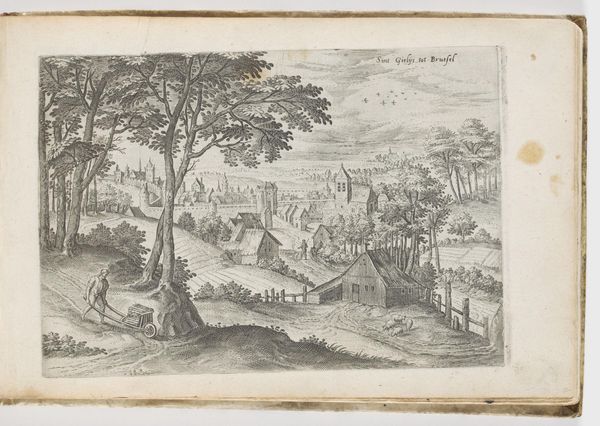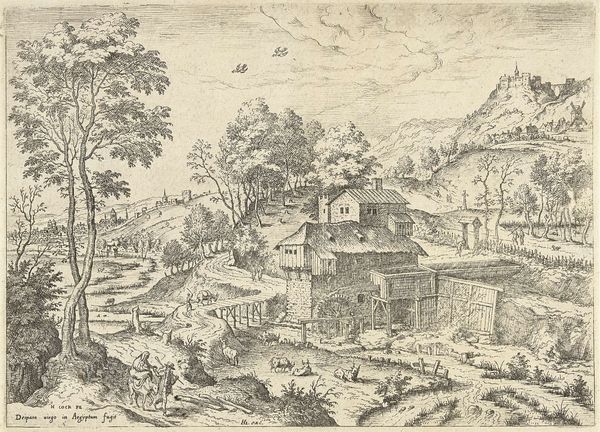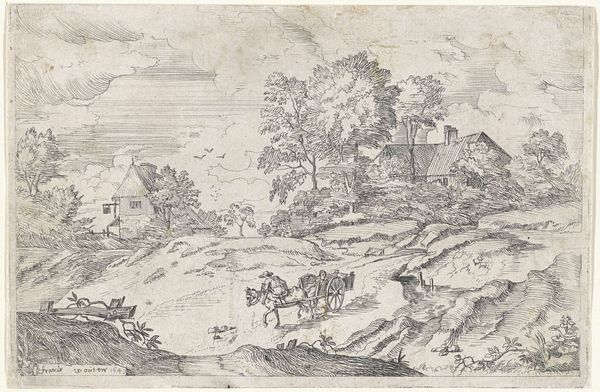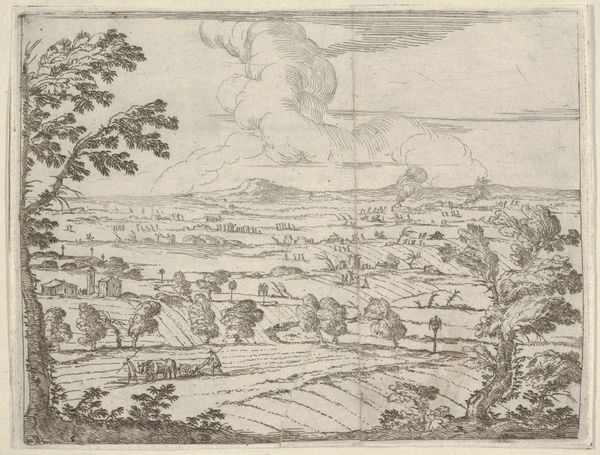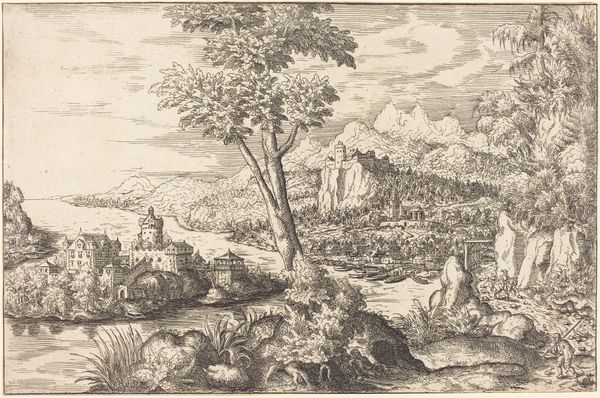
Landschap met de profeet Jona onder de wonderboom 1560 - 1564
0:00
0:00
drawing, paper, ink
#
drawing
#
narrative-art
#
landscape
#
paper
#
ink
#
cityscape
#
northern-renaissance
Dimensions: height 224 mm, width 325 mm
Copyright: Rijks Museum: Open Domain
Curator: "Landschap met de profeet Jona onder de wonderboom," or Landscape with the Prophet Jonah under the Miracle Tree, dating from 1560 to 1564 and currently housed in the Rijksmuseum. It's a drawing in ink on paper, attributed to Johannes or Lucas van Doetechum. Editor: It's a world condensed. The city feels so meticulously rendered, even teeming, but it's contrasted by this single figure hunched beneath the tree. Curator: Precisely. It's a study in contrasts, isn’t it? Look at the detail rendered in the cityscape versus the more generalized treatment of the landscape on the left. This juxtaposition raises questions about what the artist prioritized portraying and how that reflected broader artistic conventions and demands of that period. How was it meant to function as an image? Editor: To me, it reveals the increasing urbanization of the period and perhaps a bit of tension. The rendering suggests the influence of civic commissions and market considerations of Northern Renaissance artistic practices. I wonder about its distribution. Curator: These prints were, I expect, pretty widely distributed at the time. These were accessible artworks that found their way into commonplace books and served educational or even political purposes depending on how the image was interpreted. Editor: So it isn't simply a picturesque biblical scene. It’s speaking to a broader socio-political discourse, then? Jonah, of course, isn’t just sitting passively, he's in a state of waiting. He is watching, with resentment in fact, over the city of Nineveh. Curator: Exactly. The narrative is important but how that story speaks to anxieties about cities and morality within the Netherlands would have resonated deeply for contemporary viewers. Think about the economics of the image itself. Paper production, printing techniques, and the entire market that sustained this type of work all had a role to play in shaping and disseminating these perspectives. Editor: It really gets you thinking about art's engagement with both political narratives and economic structures. Curator: It highlights art as an integrated social and political phenomenon. Editor: An integration beautifully etched.
Comments
No comments
Be the first to comment and join the conversation on the ultimate creative platform.




